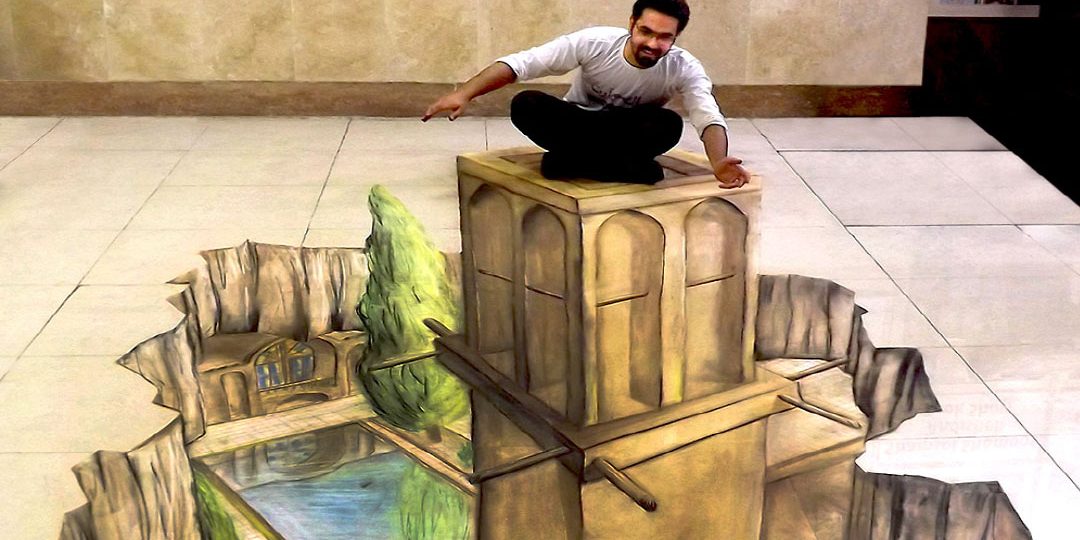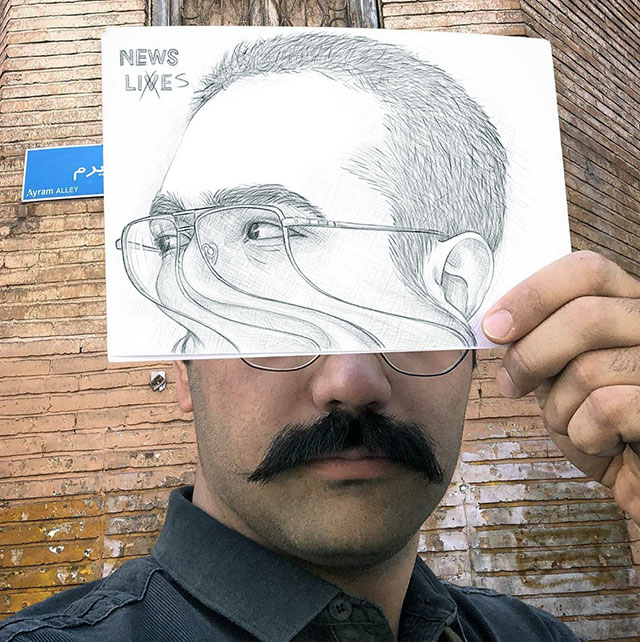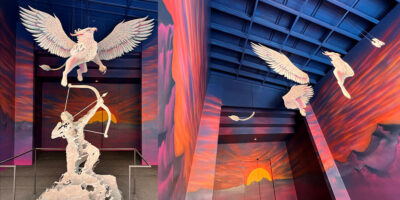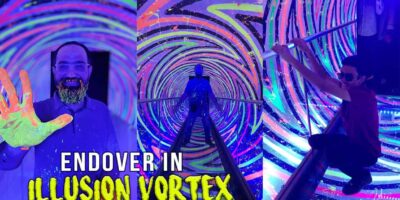3D anamorphic art is a captivating form of artistic expression that utilizes perspective and optical illusions to create stunning visual effects. Artists skillfully manipulate lines, shapes, and colors to create two-dimensional artworks that, when viewed from a specific angle, appear three-dimensional and seemingly pop out of the surface they are painted on. This art form often involves painting on the ground or walls, allowing viewers to interact with the artwork by becoming part of the illusion. The careful use of shading and perspective tricks the eye into perceiving depth and dimension, resulting in mind-bending and immersive experiences.

The Illusion of 3D Anamorphic Art
3D anamorphic art is a form of visual art that utilizes
precise techniques to create the illusion of three-dimensional objects or
scenes on a two-dimensional surface. Artists carefully calculate the angles,
proportions, and perspective to make the artwork appear realistic and immersive
when viewed from a specific vantage point. These artworks often feature
mind-bending effects, such as objects seemingly floating in mid-air, people walking
on walls, or chasms opening up beneath the viewer’s feet. The use of shading,
shadows, and intricate detailing further enhances the illusion of depth, making
the art come alive.
The optical trickery involved in 3D anamorphic art
manipulates human visual perception through the masterful use of angles and
proportions. By applying the principles of perspective in clever ways, artists
can force the viewer’s eye and brain to interpret a 2D surface as 3D. The
technique distorts reality and plays with depth cues to create dramatic
illusions that engage and surprise.

Importance of 3D Anamorphic Art
One of the reasons why 3D anamorphic art is important is its ability to engage and captivate viewers. It breaks the boundaries of traditional art forms and offers a unique and interactive experience. People are drawn to the sense of wonder and surprise that comes with witnessing an artwork transform before their eyes. It sparks curiosity and encourages exploration as viewers actively seek out the optimal viewing angle to fully appreciate the illusion. This form of art has the power to transport individuals into a different reality, stimulating their imagination and challenging their perception of space and dimension.
In addition, 3D anamorphic art brings art to life in public spaces, transforming ordinary sidewalks, streets, and walls into extraordinary installations. The element of immersion and interactivity invites participation, as people pose and photograph themselves as part of the illusion. This engages communities, draws crowds, and re-imagines the possibilities of art and public spaces. Anamorphic 3D art has the powerful ability to stop people in their tracks and capture their imagination.

Appeal of 3D Anamorphic Art
3D anamorphic art appeals to a wide range of individuals. Art enthusiasts appreciate the technical skill and precision required to create these illusions, as they showcase the artist’s mastery of perspective and optical tricks. The general public, including tourists and passersby, are often intrigued by the unexpected and eye-catching nature of these artworks. 3D anamorphic art also finds popularity on social media platforms, where people love sharing photos and videos of themselves interacting with the illusions. It has become a popular attraction in public spaces, museums, and exhibitions, drawing in crowds and providing unique, immersive experiences for visitors. Children in particular enjoy the playful, imaginative nature of anamorphic 3D art. The illusions bring excitement to spaces and invite participation as viewers try different poses and vantage points. Overall, the combination of surprise, technical mastery and share ability make anamorphic 3D creations engaging across demographics.

Notable 3D Anamorphic Artists
Some artists have gained renown for their skill in 3D anamorphic art. These include:
– Kurt Wenner – Called the “father of 3D pavement art”, he is known for large scale sidewalk illusions. His work appears globally.
– Julian Beever – Master of chalk 3D pavement art, crafting the illusion of depths and protrusions.
– Manfred Stader – Specializes in hyper realistic anamorphic paintings that appear three-dimensional.
– Leon Keer – Paints elaborate murals with anamorphic effects of shifting perspectives and optical illusions.
– Edgar Mueller – Creates street paintings that play with 3D effects and the illusion of movement and time.
– Saleh Sokhandan – Examples of his anamorphic works are very attractive and spectacular
– John Pugh – Uses anamorphic techniques on murals, making them appear to bulge and bend when viewed from specific angles.

How to create 3D anamorphic art:
– Study perspective drawing techniques to understand how to convey depth on a 2D surface. Mastering principles like foreshortening and vanishing points is key.
– Use gridding to map out your anamorphic design and ensure proper proportions from the viewing angle. Draw grids on the surface and your reference image.
– Outline the major elements of your design first before adding details. Accurate initial proportion and perspective is important.
– Add shading, shadows and highlights to create the illusion of form, depth and lighting. Darker shades recede, lighter come forward.
– Use line weight variation in your drawing to further suggest depth and dimension. Thicker lines appear closer to the viewer.
– Incorporate realistic surface textures that tie in to your 3D illusion. textures that recede into distance should appear less focused.
– Limit colors to a simple palette so the illusion is not broken. Avoid complex patterns and color variations.
– Pick a well-suited subject, like architectures or objects with strong perspective lines. Avoid elements that may contradict depth.
– Consider extend your art beyond the canvas with real 3D objects to further the illusion.
– Choose a suitable surface like pavements, walls or canvases you can view from optimal angles.
– Take photographs from the intended viewing spot to check for accuracy as you work.
With practice and an understanding of perspective techniques, you can learn to create stunning 3D anamorphic artworks.

Art That Challenges Perception
In summary, 3D anamorphic art is a visually stunning and captivating form of artistic expression. It pushes the boundaries of perception, engages the viewer, and brings art to life in an extraordinary way. The ingenious use of proportion, angle and perspective catalyze the mind to interpret flat paintings as 3D worlds. These mesmerizing illusions invite participation, appreciation, and sharing. 3D anamorphic art transforms spaces and reimagines the relationship between art and audience, cementing its place as a compelling contemporary art genre.
we are here
If you need more information or want to be our customer, please contact us now
we pride ourselves on providing a comprehensive range of services to meet all of your needs. Whether you’re looking for expert consulting advice, innovative design solutions, or reliable implementation support, we’ve got you covered. Our team of experienced professionals is dedicated to delivering exceptional results that exceed your expectations every time. If you are interested in our work, you can see our portfolio and you can contact us right now.




